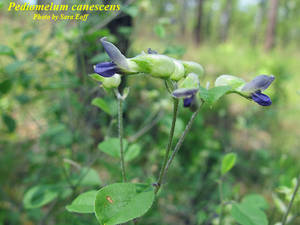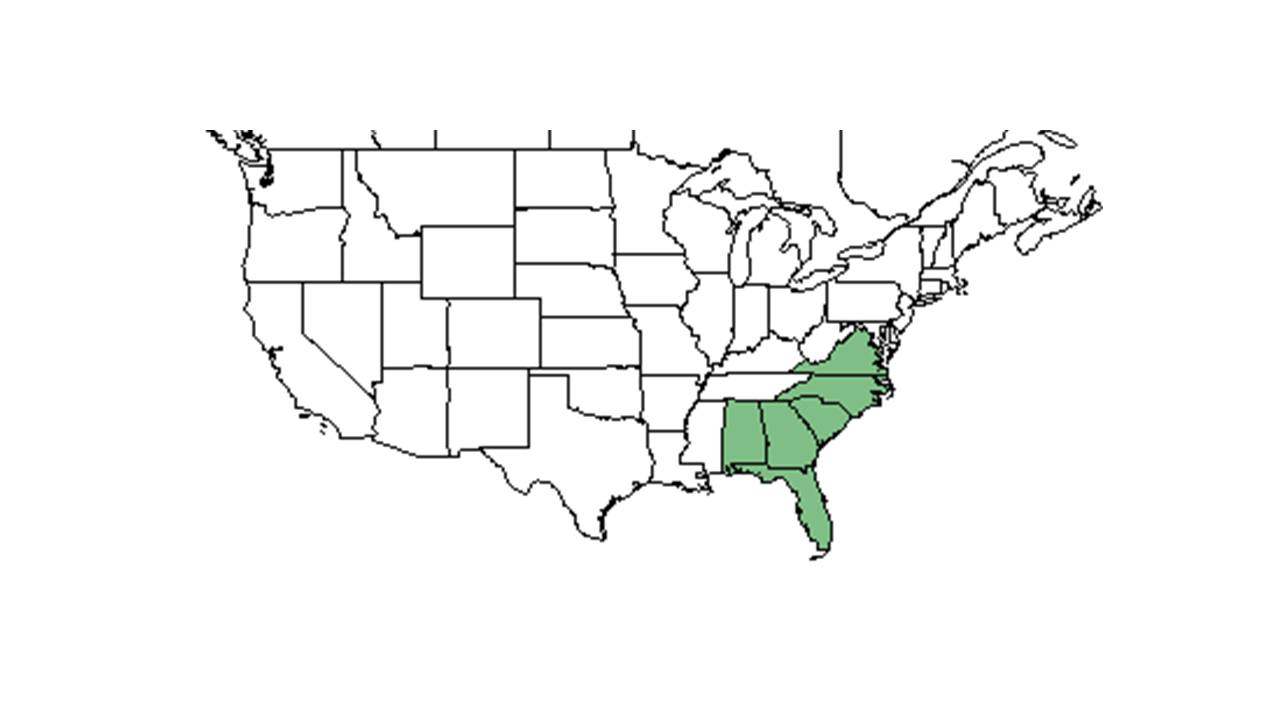Difference between revisions of "Pediomelum canescens"
HaleighJoM (talk | contribs) |
|||
| Line 18: | Line 18: | ||
}} | }} | ||
| − | Common names: | + | Common names: buckroot, eastern prairie-turnip, hoary scurfpea<ref name=weakley>Weakley, A.S. 2020. Flora of the Southeastern United States. Edition of 20 October 2020. University of North Carolina at Chapel Hill, Chapel Hill, North Carolina.</ref> |
==Taxonomic notes== | ==Taxonomic notes== | ||
Synonym: ''Psoralea canescens'' Michx.<ref name="weakley">Weakley, A.S. 2015. Flora of the southern and mid-atlantic states. Working Draft of 21 May 2015. University of North Carolina at Chapel Hill, Chapel Hill, North Carolina.</ref> | Synonym: ''Psoralea canescens'' Michx.<ref name="weakley">Weakley, A.S. 2015. Flora of the southern and mid-atlantic states. Working Draft of 21 May 2015. University of North Carolina at Chapel Hill, Chapel Hill, North Carolina.</ref> | ||
Revision as of 13:59, 19 June 2023
| Pediomelum canescens | |
|---|---|

| |
| Photo by Sara Eoff, Atlas of Florida Vascular Plants | |
| Scientific classification | |
| Kingdom: | Plantae |
| Division: | Magnoliophyta - Flowering plants |
| Class: | Magnoliopsida – Dicotyledons |
| Order: | Fabales |
| Family: | Fabaceae ⁄ Leguminosae |
| Genus: | Pediomelum |
| Species: | P. canescens |
| Binomial name | |
| Pediomelum canescens (Michx.) Rydb. | |

| |
| Natural range of Pediomelum canescens from USDA NRCS Plants Database. | |
Common names: buckroot, eastern prairie-turnip, hoary scurfpea[1]
Contents
Taxonomic notes
Synonym: Psoralea canescens Michx.[1]
Description
Pediomelum canescens is a perennial herbaceous species with a bushy growth habit,[2] it grows 1 to 3 feet tall with loose spike of dark-blue flowers and 1 to 3 foliolate leaves.[3]
"Perennial herbs, subshrubs or shrubs, more or less postulate-glandular. Leaves odd-pinnate or palmate, (1) 3-5 (7) foliolate, stipules usually persistent. Racemes or spikes pedunculate, axillary and sometimes also terminal; flowers papilionaceous. Calyx persistent, the lowermost lobe the longest or rarely all nearly equal; petals 5, blue-purple or rarely white; stamens 10, rarely 9, diadelphous or weakly monadelphous; ovary sessile or stipitate, usually 1-ovuled. Legume usually not much longer than the calyx, often conspicuously wrinkled, indehiscent or irregularly dehiscent, 1-seeded."[4]
"Coarsely canescent, perennial herb, 3-10 dm tall, from a subglobose or fusiform root 2.-4 cm thick. Leaves palmately 3-foliolate or the uppermost sometimes 1-foliolate; leaflets elliptic to obovate, mostly 1.5-6 cm long, 1-3 cm wide, eglandular to abundantly but inconspicuously glandular-punctate on both surfaces. Racemes loosely few-flowered, 2-6 cm long; peduncles 2-7 cm long, pedicels 3-6 mm long, each subtended by an ovate bract 4-6 mm long. Calyx appressed to spreading villous; petals blue or violet, 8-15 mm long. Legume ovoid, ca. 1 cm long, dehiscent."[4]
Distribution
This plant is a Southeastern Coastal Plain endemic. It ranges from southeastern Virginia, south to peninsular Florida, Panhandle Florida, and southern Alabama.[1]
Ecology
Habitat
P. canescens occurs in sandy areas of the Coastal Plain[3] such as longleaf pine-turkey oak sand ridge, secondary longleaf pine-turkey oak sand-hill ridge, longleaf pine-wiregrass sandridge, pine flatwoods, and open sandridges.[2] Has been observed growing on drying sand besides roads in open pine-oak woodlands and dry sandy fields.[2] Associated species include Serenoa repens, Quercus incana, Quercus chapmanii, Quercus laevis, Aristida, Andropogon, Onosmodium, bahia grass, and Diospyros.[2]
Phenology
P. canescens flowers from May through July and fruits from July through October.[1]
Seed dispersal
This species is thought to be dispersed by gravity.[5]
Fire ecology
Populations of Pediomelum canescens have been known to persist through repeated annual burning.[6]
Herbivory and toxicology
P. canescens seeds have been found in the stomachs of bobwhite qual.[3]
Conservation, cultivation, and restoration
Cultural use
Photo Gallery
References and notes
- ↑ 1.0 1.1 1.2 1.3 Weakley, A.S. 2020. Flora of the Southeastern United States. Edition of 20 October 2020. University of North Carolina at Chapel Hill, Chapel Hill, North Carolina. Cite error: Invalid
<ref>tag; name "weakley" defined multiple times with different content Cite error: Invalid<ref>tag; name "weakley" defined multiple times with different content Cite error: Invalid<ref>tag; name "weakley" defined multiple times with different content - ↑ 2.0 2.1 2.2 2.3 Florida State University Robert K. Godfrey Herbarium database. URL: http://herbarium.bio.fsu.edu. Last accessed: June 2014. Collectors: Robert Kral, Mabel Kral, O. Lakela, R.K. Godfrey, H. R. Reed, Loran C. Anderson, T. MacClendon, K. MacClendon, Cecil Slaughter, Travis Richardson, Steve L. Orzell, E. L. Bridges, A. F. Clewell, Sidney McDaniel, Raymond Athey, Richard D. Houk, Raymond Athey, R. A. Norris, R. Komarek, H. E. Ahles, J. Haesloop, J. R. Burkhalter, LK Kirkman, A. Gholson, D. Wolfe, Annie Schmidt, A. Johnson, and M. Jenkins. States and Counties: Florida: Bay, Calhoun, Citrus, Clay, Dixie, Duval, Escambia, Franklin, Gadsden, Hamilton, Hernando, Highlands, Hillsborough, Jackson, Leon, Madison, Okaloosa, Santa Rosa, Suwannee, Taylor, Wakulla, Walton, and Washington. Georgia: Baker, Lowndes, and Thomas. North Carolina: Hoke. Alabama: Baldwin, Geneva, and Henry.
- ↑ 3.0 3.1 3.2 Graham, E. H. (1941). Legumes for erosion control and wildlife. Washington, USDA
- ↑ 4.0 4.1 Radford, Albert E., Harry E. Ahles, and C. Ritchie Bell. Manual of the Vascular Flora of the Carolinas. 1964, 1968. The University of North Carolina Press. 599-601. Print.
- ↑ Kirkman, L. Katherine. Unpublished database of seed dispersal mode of plants found in Coastal Plain longleaf pine-grasslands of the Jones Ecological Research Center, Georgia.
- ↑ Platt, W.J., R. Carter, G. Nelson, W. Baker, S. Hermann, J. Kane, L. Anderson, M. Smith, K. Robertson. 2021. Unpublished species list of Wade Tract old-growth longleaf pine savanna, Thomasville, Georgia.